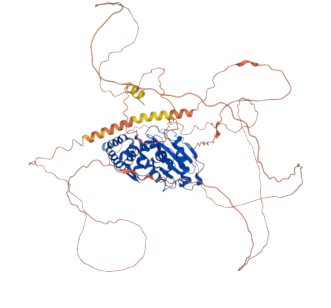New Mapping Techniques Reveal Complex Structure of Milky Way Galaxy

Astronomers have unveiled a groundbreaking method to map the outer gas disk of the Milky Way Galaxy, revealing a more complex structure than previously understood. This innovative approach, developed by Sukanya Chakrabarti from the University of Alabama and Peter Craig from Michigan State University, utilizes the positions of young stars to gain accurate insights into the distribution of hydrogen gas in the galaxy's outer regions. The findings, published in June 2025, highlight the intricate, 'flocculent' nature of the Milky Way's gas clouds, challenging long-standing assumptions about its structure.
The research team employed data from the European Space Agency's GAIA satellite, which has cataloged nearly two billion stars in the Milky Way, measuring their brightness, positions, motions, and distances. "Distance is one of the most fundamental things you can measure in the Universe, and one of the most foundational things we can work on in astronomy," said Dr. Chakrabarti. Traditional methods of mapping the galaxy relied on kinematic distances, which often produced misleading results due to inaccuracies in estimating velocity fields.
Chakrabarti and Craig's new technique involves pattern-matching between young stars and nearby gas clouds, providing a more reliable map that avoids the pitfalls of previous methods. Their findings indicate that the hydrogen gas distribution in the Milky Way is more irregular and tuft-like than previously thought, suggesting that star formation and the dynamics of x-ray binaries are influenced by this complex structure. "Our new maps nicely demonstrate that the spiral structure in the gas disk of the Milky Way is highly flocculent, and that the overall structure of the disk is complex," Craig asserted.
Historically, mapping the Milky Way's structure has posed significant challenges due to its vast size and the dynamic motion of its components. The Milky Way is a giant rotating system, and understanding the distances and velocities of its stars and gas clouds is critical in constructing accurate models of its anatomy. The study emphasizes that improved mapping techniques can enhance our understanding of the galaxy's dynamics and the interactions within its interstellar medium.
The research team identified Cepheid variable stars as key distance markers due to their predictable brightness variations. This method, pioneered by astronomer Henrietta Leavitt, has been instrumental in measuring distances across galaxies. By employing these distance markers alongside their pattern-matching technique, Chakrabarti and Craig were able to provide a more precise depiction of the gas clouds in the Milky Way's outer disk.
The implications of this research extend beyond mere cartography of the galaxy. A deeper understanding of the distribution of hydrogen gas can inform theories on star formation rates, the prevalence of x-ray binaries, and the overall behavior of dark matter in the galaxy. Furthermore, accurate distance measurements will aid in creating comprehensive three-dimensional dust maps, previously limited to regions near the Sun.
In conclusion, the new mapping technique not only revolutionizes our understanding of the Milky Way's structure but also opens avenues for future astronomical research. As scientists continue to explore the cosmos, techniques that enhance our understanding of galactic dynamics will be crucial in unraveling the mysteries of our universe. The findings of Chakrabarti and Craig mark a significant advancement in astrophysics, paving the way for future discoveries in galactic studies.
Advertisement
Tags
Advertisement





